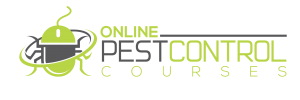Effective pest management doesn’t have to harm the environment. Integrated Pest Management (IPM) offers a balanced approach, combining prevention, monitoring, and targeted actions to control pests while protecting ecosystems. Here’s what you need to know:
- $232 million in livestock losses and $150 million in crop damage annually underscore the need for smarter pest control.
- 86% of customers prefer eco-friendly pest solutions, with many willing to pay 35% more for them.
- IPM reduces pesticide use, protects pollinators, and prevents pests from developing resistance.
The 8 Key Practices:
- Identify and Monitor Pests: Log pest activity, damage, and conditions.
- Prevent Pests: Seal entry points and remove food sources.
- Use Natural Predators: Introduce species like ladybugs or parasitic wasps.
- Adjust the Environment: Fix overwatering, improve airflow, and rotate crops.
- Install Physical Barriers: Use screens, traps, and row covers.
- Choose Safer Pesticides: Opt for low-risk options and follow labels.
- Protect Beneficial Species: Avoid spraying during pollinator activity.
- Evaluate and Improve: Track methods, costs, and results to refine strategies.
IPM is about long-term pest prevention with minimal environmental impact. Start applying these practices today for safer, more effective pest management.
IPM Strategies and Production Practices for Managing Pests
8 Key Steps for Smart Pest Control
These steps, based on IPM (Integrated Pest Management) principles, help you balance effective pest control with care for the environment.
1. Identify and Monitor Pests
Start by identifying the pests accurately. Keep track of their activity using notes and photos. Be sure to log:
- Where pests are appearing
- When they are most active
- The type and extent of damage caused
- Conditions like temperature and humidity during infestations
2. Prevent Pests Before They Arrive
Focus on prevention by making your space less inviting to pests. Seal up entry points with weather stripping, repair damaged screens, and close gaps around pipes or wires. Eliminate food sources by storing items in airtight containers and keeping surfaces clean.
3. Use Natural Predators
Nature has its own pest control system. For instance, ladybugs eat aphids, and parasitic wasps help manage caterpillar populations. Use native predators to avoid introducing harmful species into your environment.
4. Adjust the Environment
Simple environmental changes can make a big difference. For example:
- Fix overwatering issues to reduce moisture
- Space plants properly to improve airflow
- Remove standing water to stop mosquitoes from breeding
- Use mulch to block weeds naturally
- Rotate crops to interrupt pest life cycles
5. Install Physical Barriers
Physical controls keep pests away without chemicals. Use screens on windows and doors, row covers for crops, and traps to block pests while protecting helpful species.
6. Opt for Safer Pesticides
If you need to use pesticides, choose those labeled CAUTION and follow the instructions carefully.
7. Protect Beneficial Species
Apply pesticides during early mornings or late evenings to avoid harming pollinators. Create buffer zones around treated areas to protect non-target species, and grow a variety of plants to provide habitats for helpful insects and birds.
8. Evaluate and Improve
Keep records of your pest control efforts, including:
- Methods used
- Dates and weather conditions during applications
- How well treatments worked
- Costs involved
- Effects on beneficial species
This data helps you fine-tune your approach and make smarter decisions in the future. Regular tracking ensures you find the most effective methods with minimal environmental impact.
sbb-itb-c4006de
Conclusion
Managing pests with care for the environment is becoming increasingly important. The eight practices discussed here offer a way to balance effective pest control with ecological responsibility.
The industry is shifting toward greener solutions. For example, 86% of pest management professionals describe their markets as environmentally aware, and organic pesticides are projected to exceed $8 billion by 2025.
"A sustainable approach to managing pests by combining biological, cultural, physical, and chemical tools in a way that minimizes economic, health, and environmental risks." – US law (7 USC 136r‑1)
By using these methods, pest control professionals can achieve the following:
- Reduce the risk of groundwater contamination
- Slow the development of pesticide resistance
- Support populations of helpful species
- Safeguard human health and the surrounding environment
Improvement is an ongoing process. The UC Statewide IPM Program emphasizes this approach:
"IPM is an ecosystem‑based strategy that focuses on long‑term prevention of pests or their damage through a combination of techniques such as biological control, habitat manipulation, modification of cultural practices, and use of resistant varieties."
This approach proves that pest management can be effective while also being responsible. For more information and training opportunities, check out our Training Resources.
Training Resources
Boost your pest management expertise with our state-approved certification programs, designed to provide effective and environmentally conscious pest control solutions.
| Module | Focus Areas | Outcomes |
|---|---|---|
| Ecosystem Management | Biological control, habitat changes | Learn strategies for long-term pest prevention through ecosystem-based methods. |
| Monitoring & Assessment | Pest identification, population tracking | Gain skills in precise pest monitoring and maintaining accurate records. |
| Prevention Strategies | Cultural practices, physical barriers | Discover non-chemical methods to prevent pest issues. |
| Responsible Pesticide Use | Selection, application, safety | Learn to safely and effectively use low-impact pesticides when necessary. |
These modules are designed to equip you with the knowledge and tools needed for effective pest management while minimizing environmental impact.
Our training programs build on these practices to deepen your understanding of responsible pest control methods.
Program Highlights:
- Earn state-approved CEUs/CCUs
- Access course materials anytime, anywhere
- Download certificates immediately after completion
- Apply newly learned techniques directly in the field
The EPA emphasizes the importance of these methods:
"IPM programs use the most effective, lowest risk options considering the risks to the applicator, building occupants, and environment." – US EPA
By completing our training, you’ll be able to:
- Set appropriate action thresholds for various pest scenarios
- Choose integrated management tools tailored to specific needs
- Keep detailed monitoring records
- Adapt control strategies based on outcomes
Specialized Courses
We offer specific training for different settings, such as urban areas, agricultural zones, and sensitive environments like schools. The EPA notes, "IPM is a safer and usually less costly option for effective pest management in the school community".
Get started today with instant access to our curriculum. Each course includes hands-on exercises, case studies, and assessment tools to help you master environmentally responsible pest management.







